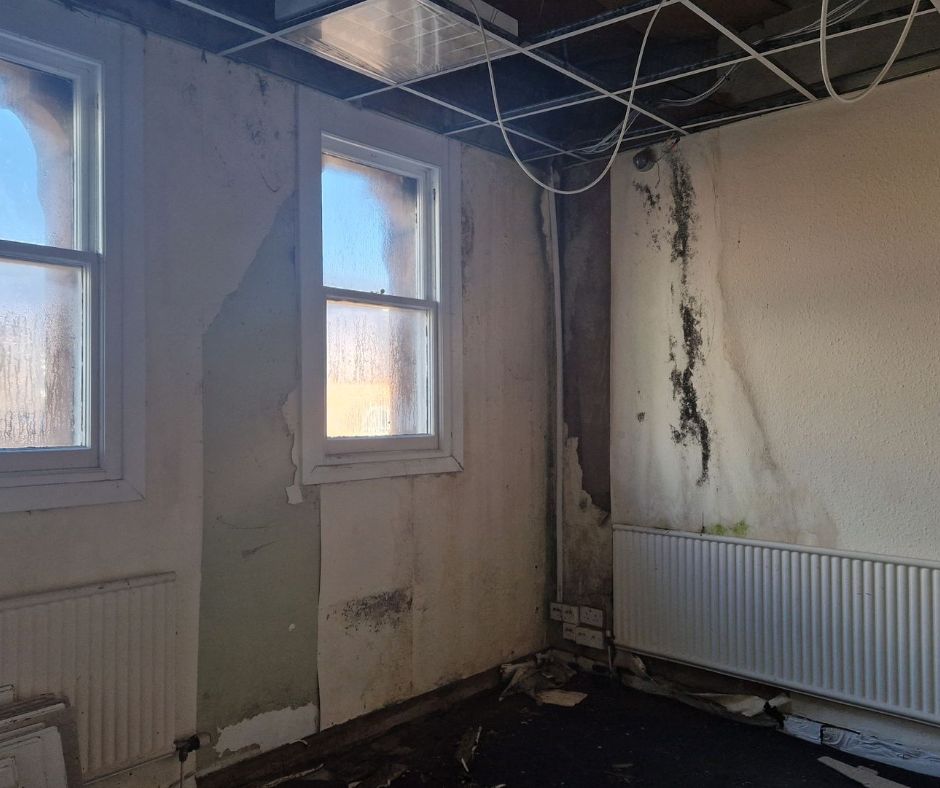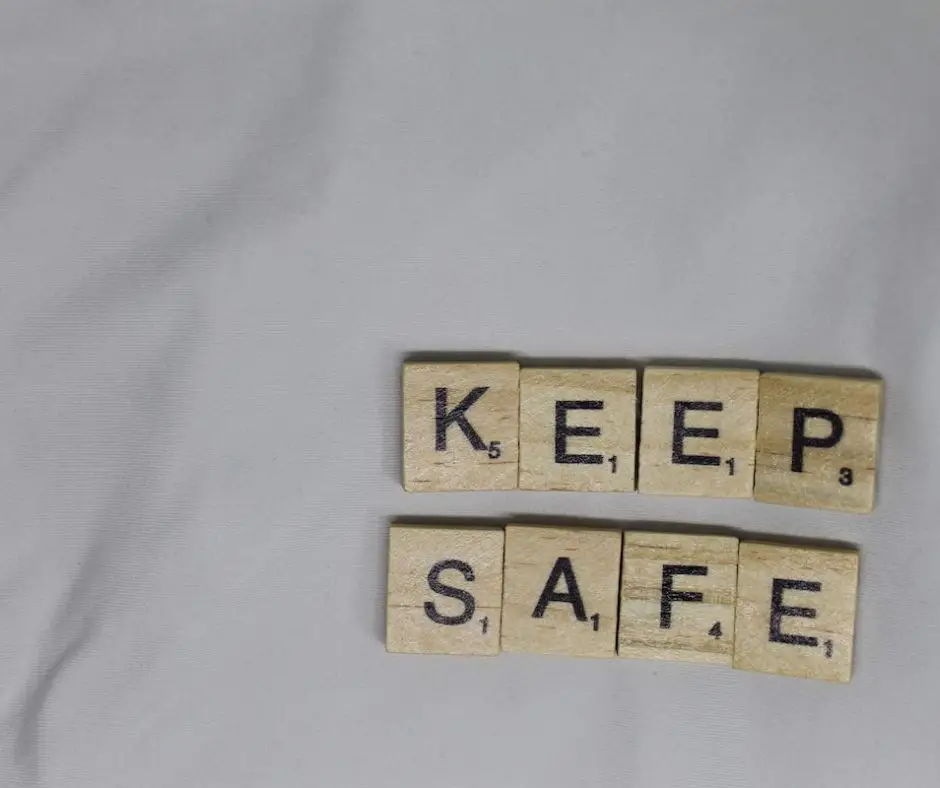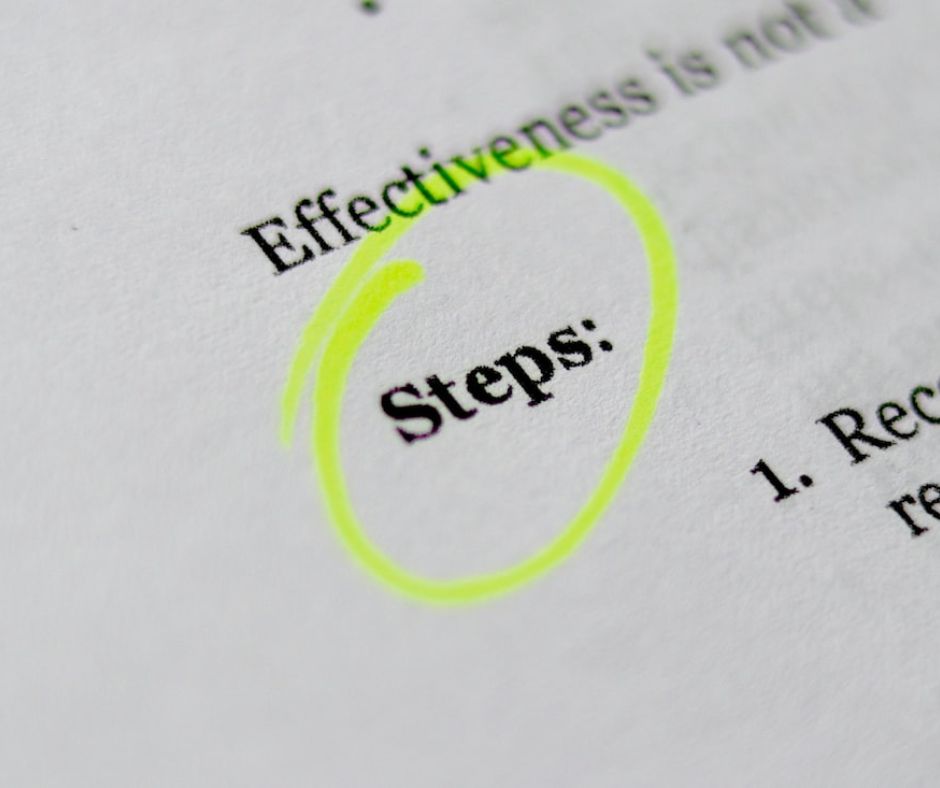Mould In Rental Property: Landlords Responsibility
As a landlord, you know that your rental property is a valuable asset. But are you aware of the potential damage caused by mould? Mould can cause serious health issues for tenants and can result in costly repairs for landlords. Is mould a landlord’s responsibility?
Mould is generally considered the landlord’s responsibility to address as it can pose a health hazard to tenants. Landlords are responsible for maintaining the property and ensuring it is safe and habitable for tenants. If a tenant suspects there is mould in the property, they should inform the landlord immediately.
In this article, we will discuss the responsibilities of landlords when it comes to dealing with mould in rental properties.
Mould is often seen as an unavoidable part of renting out a property. After all, it’s difficult to avoid moisture build-up and damp in some buildings – especially older properties. However, landlords need to be aware that they have a responsibility to take action if they suspect mould in their rental property. Not only could tenants become seriously ill if exposed to mould spores; but failing to address the issue could leave landlords open to legal action from unhappy tenants who have suffered due to poor housing conditions.
We’ll look at the steps that landlords should take when presented with the issue of mould – both before and after signing tenancy agreements – so that you can protect yourself and your tenants from any unpleasantness down the line. So let’s start by exploring what causes mould and how it can be prevented…

What is Mould?
Many people have heard the term ‘mould’, but very few understand the definition and implications of this unwelcome guest in a rental property. It’s important to understand what mould is, and how it can affect the comfort of tenants and landlords alike. So let’s break down what mould is and what it means for a landlord’s responsibility.
Mould is a type of fungus that grows in moist environments and feeds on organic matter like wood, paper or fabric. It’s often associated with dampness and poor ventilation, which can create an unhealthy environment for both tenants and landlords. The most common types of mould are Cladosporium, Stachybotrys Chartarum, Aspergillus, Penicillium, Alternaria and Fusarium.
It’s easy to see why landlords should take action if mould appears in their rental property: not only does it cause discomfort for tenants but it can also result in costly damage over time due to its persistent growth. That said, it isn’t always easy to prevent mould from occurring; there are many potential causes that must be addressed before any effective solution can be put into place. So now that we know what mould is, let’s look at some of these potential causes…
Causes Of Mould In Rental Properties
Mould in rental properties is a common issue that landlords must address. To tackle this problem head on, we must understand the causes of mould growth. In most cases, mould is caused by moisture buildup and poor ventilation. With too much dampness in the air, fungal spores find the perfect breeding ground to grow and spread. Poor ventilation can make matters worse as it prevents fresh air from entering the property, trapping stale air with high levels of humidity.
Fortunately, there are preventive measures landlords can take to reduce the risk of mould growth in their rental properties. These include ensuring adequate insulation throughout the property and fixing any existing leaks or cracks that could lead to water damage. Additionally, it’s important to ensure proper ventilation throughout the home by installing extractor fans and keeping windows open when needed.
By taking these steps, landlords can help protect their rental properties from mould growth and reduce tenant complaints about living conditions down the line. And with fewer health risks associated with mould exposure for both tenants and landlords alike, everyone wins!
The next section will discuss the health effects of mould exposure on people living in rental properties.
Health Effects Of Mould Exposure

Mould can be a silent, insidious force that can cause significant health issues for those living in rental properties. It is essential to understand the health risks and effects associated with mould exposure as this knowledge can help landlords fulfil their obligations under tenancy laws.
The health effects of mould exposure vary depending on an individual’s sensitivity level and the extent of the mould infestation. Generally speaking, some of the most common health concerns associated with mould include respiratory problems, eye irritation, skin irritation, headaches and other neurological issues. Those who suffer from asthma or allergies may be particularly vulnerable to adverse reactions to mould.
It is also important to note that prolonged exposure to mould has been linked to a range of serious illnesses such as chronic fatigue syndrome and even cancer. For this reason, it is crucial that landlords take proactive steps to identify any potential sources of mould in their rental properties and tackle them immediately. By doing so, they can protect the wellbeing of their tenants and comply with their legal obligations at the same time.
Living in a property affected by mould should never be taken lightly, as neglecting its presence can have severe repercussions on one’s physical and mental health. Therefore, landlords should take all necessary measures to ensure their rental properties are free from such hazardous elements, thus safeguarding the wellbeing of all parties involved. With this in mind, it follows that landlords must remain vigilant when it comes to detecting signs of possible mould growth in order to protect themselves and their tenants from any potential harm it could cause.
There was a very sad case in the news recently. A two-year-old’s death was caused by prolonged exposure to mould in his home, a coroner ruled. Awaab Ishak died as a result of a severe respiratory condition in Rochdale, Greater Manchester, in December 2020. Speaking at his inquest, coroner Joanne Kearsley said: “There is little doubt that the tragic death of Awaab Ishak should be a defining moment for the housing sector.”
Landlord Obligations Under Tenancy Laws
As a landlord, it is your responsibility to ensure that your rental property is compliant with tenancy laws. This includes making sure that there is no mould present, as this can be a health hazard for tenants. You should take the necessary steps to prevent the growth of mould in your property. This could include providing adequate ventilation and moisture control measures.
You should also make sure that you have the right insurance coverage in case anything unexpected happens which could cause mould growth in your rental property. This will help protect both you and your tenants from any potential losses due to mould-related issues.
It’s important to stay up-to-date on tenant rights and obligations under tenancy laws so that you can be sure that you are meeting all of your legal requirements as a landlord. Testing and remediation processes should be carried out regularly to ensure that mould is not present in the rental property and any damage caused by it can be remedied quickly and effectively.
Testing And Remediation Processes
According to a recent survey, half of all renters in the UK have reported or experienced mould damage in their rented properties. With this in mind, it is essential for landlords to be aware of their responsibilities when it comes to mould testing and remediation processes.
The first step in any mould testing and remediation process should be to identify the source of the problem. This can be done by inspecting the property thoroughly and taking detailed notes on where any visible mould is present. The next step would be to undertake a professional mould test – this will identify what type of mould is present and how far its spread throughout the property.
Once the results of the test have been analysed, landlords then need to decide what course of action needs to be taken. It may simply involve cleaning affected areas with an effective anti-fungal solution; however, more severe cases may require specialist remediation services from professionals who are experienced in dealing with such issues. In either case, landlords must ensure that appropriate safety measures are taken so that tenants do not come into contact with any harmful substances during the process.
When undertaking any testing or remediation process for mould damage, landlords must make sure that they are following all relevant regulations and laws relating to health and safety within rental properties – failure to do so could result in hefty fines or even legal action being taken against them. Moving forward, prevention strategies should be implemented in order to minimise the risk of further issues arising from damp and mould damage within rental properties.
Prevention Strategies For Landlords

As a landlord, it’s your responsibility to prevent mould growth in your rental property, and the best way to do this is with prevention strategies. Regular maintenance of the property, including checking for water damage, can help stop mould from taking hold. It’s also important to keep air circulating as much as possible and make sure there are no damp spots or leaks. Keeping an eye on any potential sources of water leakage – like gutters and downpipes – can help prevent serious damage from occurring.
It’s also essential that landlords provide tenants with advice on how to spot the signs of mould, and what steps they should take if it does occur. If tenants know what to look for, they’re more likely to report any issues before they become worse. Landlords should also ensure any furniture or items left in the property are clean and dry before a tenant moves in. This will help reduce the likelihood of mould spores being present in the first place.
Finally, landlords need to be aware that even if all preventive measures are taken, there may still be times when mould appears in a rental property due to external factors such as flooding or condensation caused by high humidity levels. In such cases, it’s important that landlords act quickly and seek professional advice if necessary – failure to do so could result in significant property damage. With these prevention strategies in place, landlords can protect their rental properties from mould-related issues while providing their tenants with a safe and healthy living environment. To further ensure this safety and healthiness, tenant responsibilities for mould prevention and removal must also be considered.
Tenant Responsibilities For Mould Prevention And Removal
Having discussed the strategies landlords should employ to prevent mould in rental properties, it is also important for tenants to understand their responsibilities. As a tenant, you have certain legal obligations with regard to the upkeep of your rental property. Here are four key areas where tenants must take action:
- Conduct regular inspections: Tenants should inspect their rental property at least once a month, and look out for any signs of mould or damp that could indicate an underlying problem.
- Keep windows open: Opening windows on a regular basis will help reduce condensation buildup, which can be one of the main causes of mould growth inside homes.
- Report issues quickly: If tenants notice any signs of mould, they should report this immediately to their landlord or letting agent so that the issue can be addressed promptly before it gets worse.
- Avoid blocking air vents: Blocking air vents can restrict airflow and cause condensation which could lead to mould growth in the property.
Mould prevention and removal is not only about following legal obligations – tenants also have an ethical responsibility to take care of the rental property in order to avoid any unnecessary damage or disruption caused by mould growth. By understanding their responsibilities and taking action when required, tenants can help ensure that rental properties remain safe and comfortable places to live in for everyone involved. The next section will focus on insurance coverage for property damage from mould – an important consideration for both landlords and tenants alike.
Insurance Coverage For Property Damage From Mould
Mould can cause costly damage to rental properties, so landlords must be sure they are covered by a suitable insurance policy. Mould insurance should cover the cost of removing mould and repairing any property damage caused by it. In some cases, the insurer may also cover any losses incurred by tenants due to mould infestation.
When looking for an insurance policy, landlords should check that it includes coverage for mould damage. It’s also important to know what exclusions apply, as not all policies will cover all types of mould damage. For instance, some policies may not cover damage caused by floods or poor ventilation in the property.
It’s essential that landlords understand their insurance coverage and ensure they have adequate protection against mould-related damages. This way, they can rest easy knowing that if a tenant reports mould in their rental property, they are protected from any financial losses incurred due to the problem.
Taking out a suitable property damage insurance policy is a must for all landlords who want to safeguard themselves against potential problems like mould in their rental properties. With this type of policy in place, landlords can feel confident that if anything goes wrong with their property, they’ll be covered and won’t incur any additional costs. From here, we’ll look at what legal action can be taken if tenants suffer financial losses due to mould in a rental property.
Legal Action For Compensation
If you’re a tenant of rental property and exposed to mould, then it’s important for you to know your rights. The landlord is responsible for ensuring the property is safe and free from any health hazards, such as mould. As a tenant, you can take legal action against the landlord if they fail to address issues such as mould.
The following table outlines the different actions that tenants can take in order to receive compensation for damages caused by exposure to mould:
| Action | Result |
| Rent Abatement | Reduced rent payments |
| Monetary Damages | Compensation for medical expenses |
| Repairs or Replacement | Landlord must repair or replace |
| Termination of Lease Agreement | Allows tenant to move out without penalty |
It’s essential that landlords are aware of their responsibility when it comes to renting out properties. They must make sure the property is habitable and fits the standards set by legislation. Tenants should also be aware of their rights in case they face issues like mould in their rental properties. If a landlord fails to provide a safe environment, then legal action may be taken against them to receive compensation.
Taking an informed approach is key when dealing with matters such as this one. Knowing your rights and engaging with experts can help ensure that both parties are treated fairly. To go beyond simply understanding legal actions, it’s important to look at best practices for landlords when it comes to preventing mould growth in rental properties.

Best Practices For Landlords
Now that landlords have been made aware of their legal responsibilities when it comes to mould in rental property, it is time to take a look at best practices for landlords when dealing with this issue. By implementing some basic steps, landlords can ensure their properties are free of mould and ensure good tenant relations.
Firstly, one of the most important things a landlord can do is have a comprehensive rental agreement in place. This should set out the expectations between landlord and tenant regarding maintenance and cleaning of the property. The agreement should also clearly state what will happen if mould does appear in the property and how to avoid it from occurring in the first place. Having this information readily available will help protect both parties in case of any disputes or legal action.
Secondly, there should be regular property inspections carried out by the landlord or their agents to identify any potential problems before they become big issues. This could involve checking walls, ceilings and windows for signs of dampness or mould growth. In addition to this, landlords should also check ventilation systems such as extractor fans as these can help prevent condensation which can lead to mould spores forming in the property.
Finally, educating tenants on how to spot early signs of mould is a great way for landlords to keep their properties healthy and safe for all occupants. By providing tenants with information about proper ventilation techniques, avoiding over-humidifying rooms and setting up regular cleaning schedules, landlords can help ensure that their properties remain free from mould throughout the tenancy period regardless of whether it’s furnished or unfurnished.
Frequently Asked Questions
What Is The Average Cost Of Mould Remediation?
When it comes to the cost of mould remediation, landlords need to be aware of potential expenses. Mould removal costs vary depending on the size and location of the mould, as well as the extent of the damage. The cost for a professional clean-up can range anywhere from £100 – £1,000 or more. Here are some factors that influence the total price:
- Type of Mould: The type of mould present will affect remediation costs. For example, black mould is usually more expensive to remove than other types.
- Location: Where the mould is located in the property will also affect costs. Removing mould from hard-to-reach areas such as crawl spaces and attics may require additional equipment, which can add to the overall price.
As a UK property investor, it’s important to be aware of these costs when budgeting for a rental property. To get an accurate estimate, it’s best to consult with a professional who can assess and determine the amount of work needed for remediation.
It’s also important to note that there may be additional expenses beyond just cleaning up and removing existing mould. Landlords should factor in potential future maintenance costs and consider taking preventative measures such as investing in dehumidifiers or air purifiers to help reduce humidity levels in their properties, as high humidity can promote mould growth.
Are There Any Laws That Apply To Mould In Rental Property?
Mould in rental property can be a tricky and complex problem to address. Like a wall of fog, it can seem like an immovable obstacle that landlords have no way of getting around. It’s important to understand that when it comes to mould in rental property, there are certain laws that apply. Knowing these laws and regulations can help landlords protect themselves, their tenants, and their property.
As a UK property investor, understanding the legal framework surrounding mould in rental properties is essential for protecting your investment and staying on the right side of the law. While it can be daunting trying to stay abreast of all the relevant regulations and laws that apply, knowledge is power – so it pays off in the long run! Taking proactive steps such as monitoring humidity levels regularly and repairing leaks quickly will ensure your tenants’ safety while also giving you peace of mind as a landlord knowing that you’re doing everything within your power to protect your investment and remain compliant with applicable laws.

How Long Does It Take To Identify And Remove Mould?
Identifying and removing mould from rental properties can be a tricky process, depending on the severity of the situation. While there is no definitive timeframe for the process, understanding how to identify mould and the steps involved in its removal is key to preventing further damage and keeping tenants safe.
When it comes to identifying mould in a rental property, landlords should be aware of any areas where water has been present or where moisture builds up. These could include broken pipes, leaky roofs or walls that have been exposed to rain or other sources of water. It’s important to inspect these areas closely and ensure any visible signs of mould are removed promptly. If mould isn’t properly identified, landlords may end up dealing with more serious issues down the line.
To remove existing mould, there are several steps that need to be taken: firstly, all affected items must be removed from the premises; then an assessment needs to be made as to whether professional remediation is necessary; if so, a mould specialist should be called in to conduct an inspection and develop a plan for remediation; finally, once the remediation is complete, efforts must be made to prevent future occurrences through proper maintenance and repairs.
By following this process and remaining vigilant with inspections and repairs, landlords can effectively limit their exposure when dealing with mould in rental properties. Taking action quickly will help prevent costly damage while ensuring tenants stay safe in their homes.
Are There Any Health Risks Associated With Living In A Mouldy Rental Property?
Living in a mouldy property can be a serious health risk. Mould spores can cause respiratory issues, skin irritation, and even asthma-like symptoms. It’s important for landlords to understand the dangers of mould exposure in rental properties and take action to ensure that their tenants are not put at risk.
Landlords have a responsibility to identify and remove mould from rental properties in order to protect their tenants’ health. If any signs of mould are present, it is important that they take immediate action to address the issue. This could include having professional cleaners come in and clean up the property or using ventilation systems to reduce humidity levels.
The health effects of mould can be long-lasting if not addressed promptly, so landlords should take steps to ensure that their rental properties remain free of mould. Regular inspections should be carried out to check for signs of potential infestations, and any necessary repairs or improvements should be made as soon as possible. Landlords should also make sure that tenants are aware of the risks associated with living in a mouldy property and provide them with the resources they need to protect themselves.
In short, it is essential for landlords to recognise the dangers of living in a mouldy rental property and take appropriate steps to ensure their tenant’s safety and wellbeing. Doing so will help create an environment where people can live comfortably and securely without fear of adverse health effects from mould exposure.
Can Tenants Be Held Responsible For Mould In The Property?
It’s an age-old question: can tenants be held responsible for mould in their rental property? Well, while it may seem like a tenant should be accountable for any mould growing in their home, it’s actually the landlord who has the ultimate responsibility here.
First and foremost, let’s consider safety. Mould poses serious health risks – from skin irritation to severe respiratory problems – which means landlords must take precautions to ensure their tenants are living in a safe environment.
So what happens if tenants are found to be responsible for the growth of mould in a rental property? In short, the tenant is not liable for any cost associated with mould remediation or damage caused by it; this is ultimately the landlord’s responsibility under local law. To avoid such situations, tenants should always be sure to report any potential signs of mould as soon as possible so that it can be addressed swiftly and efficiently by their landlord:
- Make sure all windows are kept open and/or vents are cleared regularly
- Check walls and ceilings for discolouration or dampness
- Monitor humidity levels within your home
- Report any visible signs of mould to your landlord immediately
By following these simple steps and adhering to local laws, you can help keep your rental property free from dangerous mould infestations – saving you time, money and peace of mind!
Conclusion
Mould in rental property is a serious issue and landlords must take responsibility for its removal. The average cost of mould remediation can be high, so it’s important to act quickly. There are laws in place to protect tenants from living in a mouldy rental property, and landlords should make sure they are aware of them. Removing mould can also take some time, so it’s important to start the process as soon as possible.
Living in a mouldy rental property can bring with it some health risks, so it’s essential that landlords take action right away. Tenants may not always be responsible for the presence of mould, but they should still do what they can to help keep the property clean and free from moisture build-up. As an investor, I would recommend that all landlords conduct regular inspections to ensure their properties remain safe and habitable for their tenants.
To summarise, mould in rental properties is something that should be taken very seriously indeed; like a ticking time bomb, if left unchecked it could cause costly damage and even harm to those living there. Therefore, landlords must act swiftly and decisively – ‘nip it in the bud’, if you will – in order to protect their investment!


